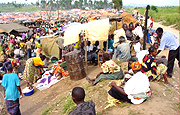Behind DR Congo’s war games
The Masisi Hospital, deep in the green mountains of war-torn eastern Democratic Republic of Congo, is a place of miracles.

Most of these people have fled the Congo because of the war.
